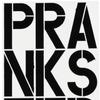Court Rules for Collector of Disputed Egon Schiele Drawing
- October 14, 2012 22:16
On October 11, a seven-year legal dispute over the ownership of an Egon Schiele drawing concluded when the Second Circuit Court of Appeals in New York ruled that the current owner could keep full title despite claims by the heirs of a Schiele collector who contended that the work was stolen by Nazis during World War II.
The case, Bakalar v. Vavra, revolved around Schiele's "Seated Woman With Bent Left Leg (Torso)" which collector David Bakalar purchased in the early 1960s for about $3,300 from Galerie St. Etienne in Manhattan.
Heirs of the alleged former owner of the drawing, a Viennese cabaret singer named Fritz Grunbaum, who was murdered by the Nazis in 1941, said the Schiele was taken from his estate after he was arrested in Vienna in 1938.
In 2004, Bakalar sold the Schiele at Sotheby’s in London for about $675,000, but the sale was stopped when the claimants in the case, Milos Vavra and Leon Fischer, who have been declared in Austria to be the sole heirs of Fritz Grunbaum, asserted that “Torso” was stolen from Grunbaum by the Nazis. (The Nazis considered Schiele's work to be "degenerate" and not worth collecting.)
Grunbaum was a known collector of Egon Schiele works, however, there was no direct evidence that Grunbaum had ever actually owned the drawing or that the drawing had ever been confiscated by the Nazis or their agents.
Evidence emerged that the drawing had been sold by Grunbaum’s sister-in-law, a woman named Mathilde Lukacs, in Switzerland in 1956, according to Bakalar's legal team at Pryor Cashman. The Swiss art dealer who had purchased the drawing from Lukacs produced all of his records from that time period and also testified in the case.
Based on this piece of evidence, Judge Pauley of the U.S. District Court for the Southern District of New York found as a matter of inference that Grunbaum more likely than not did once own the drawing, but also agreed with Pryor Cashman’s argument that the drawing had not been stolen by the Nazis and had instead remained with the family. Pryor Cashman successfully argued that same point on appeal to the U.S. Court of Appeals for the Second Circuit.
The ruling is particularly significant because Bakalar was required to disprove Nazi theft under controlling New York law, which strictly holds that good faith purchasers of property (like Bakalar) can never take good title if the property was once in the hands of a thief. Such burden-shifting is rare in the United States.
The Grunbaum heirs had alternatively alleged that if Lukacs did possess the drawing after World War II, then she had stolen the drawing from the Grunbaum estate. Bakalar's lawyers successfully argued under New York’s so-called “laches defense” that the heirs and their predecessors, i.e., their parents and grandparents who had more direct knowledge of the situation and who knew Lukacs, had unreasonably delayed in pursuing such a claim against Lukacs and had consequently allowed the critical evidence to disappear, thereby unduly prejudicing Bakalar’s ability to disprove that Lukacs herself had been a thief.
“The Court’s ruling is significant in holding that the laches defense, and the question of delay in gathering evidence, does not reset with each successive generation,” says James A. Janowitz, a senior partner in Pryor Cashman’s Litigation Group, and counsel for Bakalar. “The duty to search and act in a timely matter should rest with the first generation to lose the property.”
The Second Circuit’s ruling regarding the laches defense is particularly significant to New York’s art market. While New York strictly favors the rights of dispossessed former owners over the rights of good faith purchasers of stolen property, the laches defense provides an important measure of balance so that good faith purchasers may defend their title against stale or frivolous claims, when there is very little direct evidence concerning the situation.
“This ruling offers very important protection for good faith buyers and sellers of art in New York,” adds William L. Charron, also a partner in Pryor Cashman’s Litigation Group and co-counsel for Bakalar. “The ruling should also be highly instructive for cases nationwide where a laches defense is asserted.”






100x100_n.jpg)




100x100_c.jpg)









